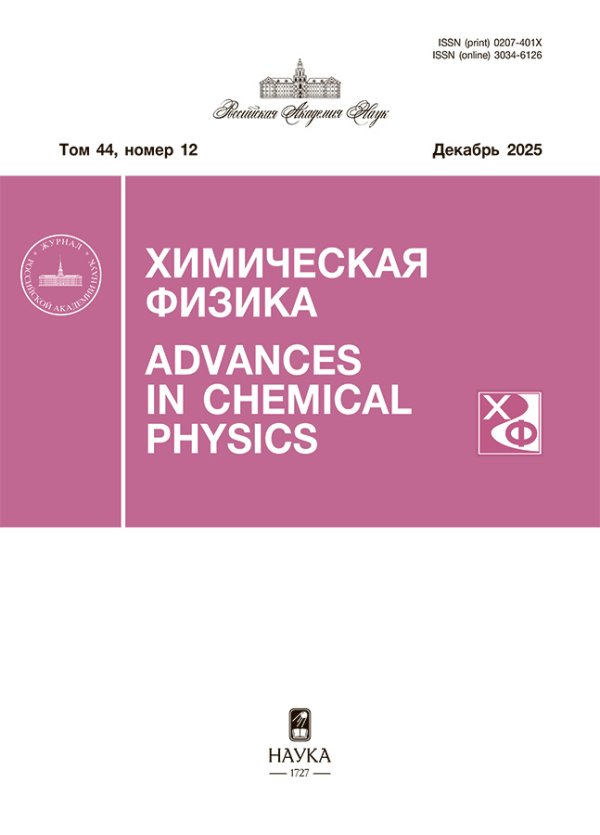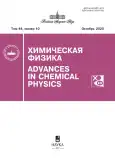Detonation characteristics of finely dispersed ammonium perchlorate
- Authors: Ermolaev B.S.1, Gavrushova V.D.1, Basakina S.S.1, Komissarov V.P.1
-
Affiliations:
- Semenov Federal Research Center of Chemical Physics
- Issue: Vol 44, No 10 (2025)
- Pages: 46-58
- Section: Combustion, explosion and shock waves
- URL: https://journal-vniispk.ru/0207-401X/article/view/318557
- DOI: https://doi.org/10.7868/S3034612625100054
- ID: 318557
Cite item
Abstract
About the authors
B. S. Ermolaev
Semenov Federal Research Center of Chemical Physics
Email: boris.ermolaev44@mail.ru
Moscow, Russia
V. D. Gavrushova
Semenov Federal Research Center of Chemical PhysicsMoscow, Russia
S. S. Basakina
Semenov Federal Research Center of Chemical PhysicsMoscow, Russia
V. P. Komissarov
Semenov Federal Research Center of Chemical PhysicsMoscow, Russia
References
- Andersen W.H., Pesante R.E. // Proc. 8th Symposium (Int.) on Combust.Baltimore. Md.: Williams and Wilkins Co., 1965.P. 705.
- Price D., Clairmont Jr. A.R., Jaffe I. // Combustion and Flame. 1967. V. 11. Issue 5. P. 415.
- Price D., Clairmont Jr.A.R., ErkmanJ.O. //Combustion and Flame. 1973. V. 20. Issue 3. P. 389.
- Ermolaev B.S., Khasainov B.A., Presles N., Vidal P. // Proc. Second European Combustion Meeting, ECM. Louvain-la-Neuve, Belgium, CD ROM: ECM-2005.
- Ermolaev B.S., Khasainov B.A., Presles H.N. // Proc. 34th Intern. Pyrotech. Seminar “EUROPYRO 2007”. V. 1. Broune, France: AFPYRO, 2007. P. 323.
- Ermolaev B.S., Komissarov P.V., Sokolov G.N., Borisov A.A. // Russ. J. Phys. Chem. B. 2012. V. 6. № 5. P. 613.
- Ermolaev B., Sulimov A. // Convective burning and low-velocity detonation in porous media. DEStech Publications, 2019.
- Ermolaev B.S., Shevchenko А.А, Dolgoborodov А.Yu., Maklashova I.V. // Russ. J. Phys. Chem. B. 2019. V. 13. № 1. P. 145.
- Ermolaev B.S., Komissarov P.V., Basakina S.S., Lavrov V.V. // Russ. J. Phys. Chem. B. 2023. V. 17. № 5. P. 1143.
- Ermolaev B.S., Komissarov P.V., Basakina S.S., Lavrov V.V. // Russ. J. Phys. Chem. B. 2023. V. 18. № 2. P. 494. https://doi.org/10.1134/S1990793124020076
- Viktorov S.B., Gubin S.A., Maklashova I.V. et al. // Khim. Fiz. 2005. V. 24. № 12. P. 22.
- Smirnov Е.B., Averin А.N., Loboiko B.G. // Combust.Explos. Shock Waves. 2012.V. 48. № 3. P. 309.
- Swift D.C., Lambourn B.D. // Proc. 10th Int. Deton.Sympos. Boston, Ma. ONR 33395-12, 1993. P. 386.
- Bdzil J., Stewart D.S. // Phys. Fluids. А. 1989. V. 1. P. 1261.
- Dobratz D.M., Crawford P.C. LLNL Explosive Handbook. Properties of Chemical Explosives and Explosive Simulants. Livermore: LLNL Laboratory, 1985. Rep. UCRL-52997.
- Zeldovich Y.B., Kompaneets А.S. Theory of detonation (Translation). Moscow: Academ. Press, 1960.
- Stewart D.S., Bdzil J.B. // Combustion and Flame. 1988. V. 72. P. 311.
- Kobylkin I.F., Solov’ev V.S., Boiko М.М. // Combust.Explos. Shock Waves. 1983. V. 19. № 4. P. 484.
Supplementary files










